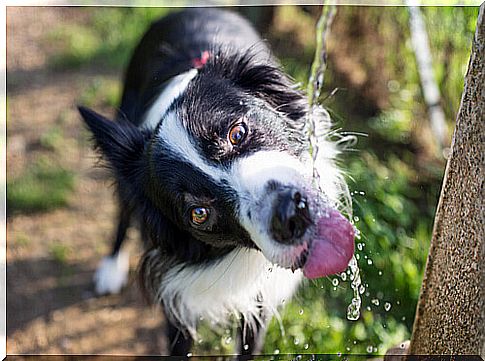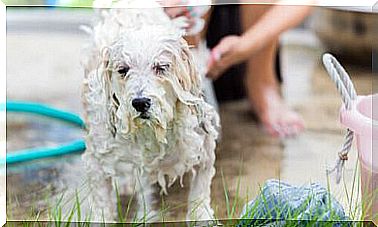How To Deal With Heat Stroke In Dogs

As we approach the hottest spring and summer months, it’s important to remember that heat stroke is a relatively common phenomenon in pets, especially dogs and cats.
Each summer, hundreds of dogs are urgently taken to veterinary hospitals because they suffer from heat stroke. Some of these cases are mild, but unfortunately they can also be serious and fatal.
In summer, it is very important that we take certain precautions. Then we’ll share some tips to let you know how to deal with heatstroke in dogs.
What is heat stroke?

Hyperthermia is the term used to describe an increase in body temperature. This increase typically occurs in response to a stimulus, such as inflammation in the body or a hot environment.
When a dog is exposed to high ambient temperatures, heat stroke, or heat exhaustion, it can develop hyperthermia. That’s because dogs don’t sweat through their skin like humans do.
Dogs sweat through the pads of their feet and the panting breath of their noses. If an animal cannot effectively expel heat, its internal body temperature begins to rise.
In the case of heat stroke, breathing panting is not enough to cool the body.
Heat stroke occurs when the body’s normal mechanisms cannot keep the temperature in a safe range.
A dog with moderate heat stroke has a body temperature of between 40 ° c-41°c and can be recovered within an hour if first aid and prompt veterinary treatment are provided.
Remember that a normal body temperature is between 37°C and 38°C.
Severe heat stroke, when the body temperature is above 41°C, needs immediate veterinary treatment or can be fatal.
Once the signs of heat stroke are detected, there is little time to prevent further damage or even death from occurring.
Generally, pet owners aren’t aware that their pets are developing this condition until it’s too late to reverse it.
To avoid any more serious situation, it is important to learn to recognize the signs of heat stroke and prevent this from happening to your dog.
As mentioned, emergency medical treatment is necessary to prevent multiple organ damage and death. Therefore, early recognition of the common signs of heat stroke is essential to saving your little friend’s life.
heat stroke signs

A dog suffering from heat stroke will show various signs such as rapid wheezing, bright red tongue, red or pale gums, sticky saliva, depression, weakness, dizziness, vomiting – perhaps bloody – diarrhea and coma.
What you should do is remove the dog from the warm area immediately.
Before taking him to your veterinarian, try to lower his temperature by : Wet him with cold water or, in the case of puppies or small dogs, use warm water.
Also, increase air circulation, place it close to a fan.
Be careful: using very cold water can be counterproductive.
Cooling down too quickly can cause other medical conditions, which may eventually be life threatening for your pet. Rectal temperature should be checked every 5 minutes.
When body temperature drops, cooling measures should cease and the dog should be completely dry and covered so that no further heat loss occurs.
Even if he appears to be recovering, you should take him to your vet as soon as possible . He will still need to be examined as he may perhaps be dehydrated or have other complications. Therefore, you must allow access to water to rehydrate you.
Once under veterinary control, the provider will control the temperature, give fluids and sometimes oxygen. Possibly some blood samples will be taken to monitor your clotting time.
To prevent this from happening to your pet on hot days , keep it in a cool and airy environment.
Make sure he doesn’t run out of water and avoid outdoor walks at midday or when the sun is too hot.









